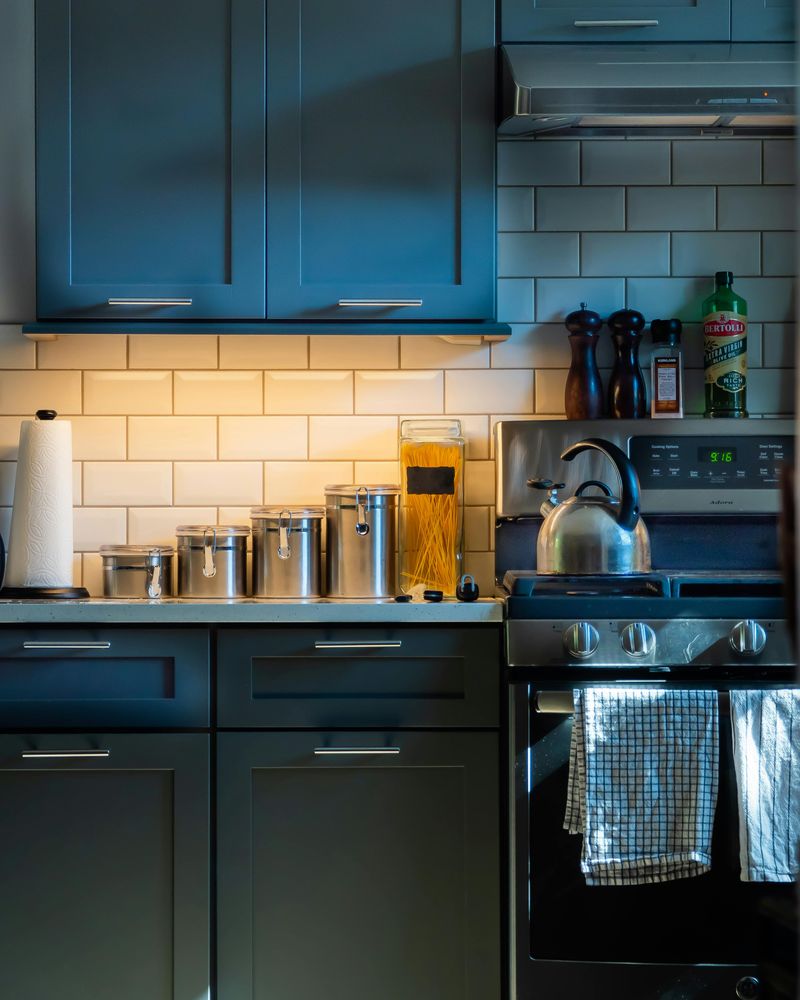13 Common Luxuries Only the Upper Middle Class Can Afford

Money doesn’t buy happiness, but it certainly makes life easier in some surprising ways. The upper middle class enjoys a lifestyle that includes perks many families can only dream about. From vacation homes to personal trainers, these luxuries often feel like everyday expenses to those who can afford them. Understanding what separates financial comfort from struggle helps us see the real cost of living well in modern America.
1. Private School Tuition

Families with higher incomes often view education as the ultimate investment, and they’re willing to spend big. Annual tuition at elite prep schools can range from $20,000 to $50,000 per child, not including uniforms, field trips, or extra activities.
For many parents, this expense represents a pathway to better colleges and stronger networks. The smaller class sizes and specialized programs appeal to those who want customized learning experiences. Yet for most American families, this price tag equals a year’s salary or more.
Public schools serve millions well, but private education remains a status symbol and opportunity accelerator for those who can swing it.
2. Frequent International Travel

Jetting off to Europe for spring break or exploring Japanese temples in the summer feels routine for some households. Annual international trips can easily cost $10,000 or more when you factor in flights, hotels, dining, and activities for a family.
These experiences build cultural awareness and create lasting memories. Many upper middle class families budget for overseas adventures the way others save for a new car. Meanwhile, millions of Americans have never left their home state.
Travel broadens perspectives, but it’s a luxury that requires both money and time off work—two things not everyone can access simultaneously.
3. Owning Multiple Cars (Often New Ones)

Walk through an affluent neighborhood and you’ll notice driveways filled with shiny, late-model vehicles. Owning two or three cars—especially electric models or high-end SUVs—has become standard among higher earners who want reliability and status.
New cars come with warranties, the latest safety features, and that satisfying new-car smell. For busy families juggling work and activities, having multiple dependable vehicles eliminates transportation headaches. But with average new car prices exceeding $45,000, this luxury strains or breaks most household budgets.
Many families make do with one older vehicle or use public transit, making the multi-car garage a clear wealth indicator.
4. Hiring Cleaning or Landscaping Services

Time is money, and wealthy families buy back their weekends by outsourcing household chores. Weekly housecleaning services typically run $100 to $200 per visit, while regular lawn care adds another monthly expense that quickly accumulates.
Having someone else scrub bathrooms and mow grass frees up hours for work, hobbies, or family time. It’s a convenience that feels normal once you’re used to it. However, most families handle these tasks themselves because paying someone else simply isn’t in the budget.
The ability to hire help represents both financial comfort and a different relationship with domestic labor than previous generations experienced.
5. Dining Out Regularly

Some households treat restaurants like their second kitchen, dining out multiple times weekly without batting an eye. Meals at trendy bistros or upscale steakhouses can easily cost $100 to $200 per outing, turning what most consider special occasions into routine expenses.
Busy professionals appreciate the convenience and social atmosphere restaurants provide. The experience saves cooking time and offers culinary variety that home kitchens can’t match. For working-class families, though, restaurant meals remain birthday celebrations or rare treats.
Food delivery apps have made this habit even easier to maintain, but the costs add up to thousands annually—money that could cover groceries for months.
6. High-End Fitness Memberships

Forget the basic gym down the street—affluent fitness enthusiasts prefer boutique studios with specialized classes and premium amenities. Memberships at places like Equinox, SoulCycle, or exclusive yoga studios can cost $200 to $300 monthly, plus extra for personal training sessions.
These facilities offer spa-like locker rooms, cutting-edge equipment, and a community of like-minded members. The motivation and quality instruction justify the price for those who prioritize wellness and have disposable income. Yet millions maintain fitness through free YouTube workouts or neighborhood jogging.
Health matters to everyone, but access to elite fitness resources clearly divides along economic lines.
7. Upgrading Homes and Interiors

Kitchen remodels costing $50,000 or more happen regularly in upper middle class homes, often just to update styles rather than fix problems. Hiring interior designers, replacing perfectly functional furniture, and refreshing spaces every few years feels normal when money flows freely.
Beautiful surroundings enhance daily life and increase property values, making these investments feel justified. The ability to customize living spaces to match Pinterest boards represents both taste and financial flexibility. Most homeowners, however, make do with what they have for decades.
Home improvement shows make renovations look accessible, but the reality requires significant capital that many families simply don’t possess.
8. Owning a Second Home or Vacation Property

Nothing says financial comfort quite like owning a getaway spot—whether it’s a ski cabin, beach condo, or lakeside retreat. Second homes require down payments, mortgages, property taxes, insurance, and maintenance costs that can rival primary residences.
These properties offer escape and investment potential, serving as family gathering spots for generations. The convenience of having your own place beats hotel hunting every vacation. Still, homeownership itself remains challenging for many Americans, making a second property an almost unimaginable luxury.
Real estate portfolios separate the comfortable from the struggling in ways that few other purchases can match so dramatically.
9. Private Healthcare and Specialist Access

Concierge medicine practices charge annual fees of $2,000 to $10,000 for same-day appointments, longer consultations, and direct physician access via text or phone. Wealthy patients bypass insurance hassles and waiting rooms entirely.
This level of healthcare includes quick specialist referrals and coordinated treatment plans that prioritize convenience. Mental health services, private therapists, and out-of-pocket treatments become accessible when money removes barriers. Meanwhile, millions delay care due to costs or struggle with insurance denials.
Health should be a right, but premium medical access functions as a luxury good that money buys for those who can afford enhanced peace of mind.
10. Top-Tier Tech and Gadgets

Upgrading to the newest iPhone every year, maintaining a fleet of Apple products, and outfitting homes with smart technology feels standard in tech-savvy affluent circles. These gadgets cost hundreds or thousands each, adding up to significant annual technology budgets.
The latest devices offer improved features, seamless integration, and that satisfying feeling of having cutting-edge tools. For upper middle class households, technology represents both utility and status. Many families, though, use phones until they break and skip smart home systems entirely.
Innovation moves fast, but keeping pace requires disposable income that transforms optional upgrades into routine purchases for the financially comfortable.
11. Hiring Tutors or Enrichment Coaches

SAT prep courses costing thousands of dollars, private music lessons at $75 per hour, and sports trainers who refine athletic skills—personalized education adds up quickly. Upper middle class families invest heavily in their children’s competitive advantages.
These services boost test scores, develop talents, and build college applications that stand out. Parents view this spending as essential for their kids’ futures rather than optional extras. Working-class students rely on school resources alone, creating achievement gaps that money directly influences.
Talent matters, but access to expert coaching and individualized attention clearly tilts playing fields toward those who can afford to pay for excellence.
12. Luxury Fashion and Accessories

Designer handbags costing thousands of dollars, luxury watches, and wardrobes filled with premium brands represent everyday quality for affluent shoppers. What others consider splurges become standard purchases when budgets accommodate high-end fashion.
These items signal taste, success, and belonging within certain social circles. Quality craftsmanship and timeless styles justify the prices for those who can afford them. Most people, however, shop sales at mid-range stores or stretch clothing budgets carefully.
Fashion choices reflect personal style, but luxury goods function as visible markers of economic class that separate casual shoppers from serious spenders with disposable income to burn.
13. Early Retirement Contributions and Investments

Maxing out 401(k) contributions at $22,500 annually, building stock portfolios, and owning rental properties for passive income—these wealth-building strategies require money beyond basic living expenses. Upper middle class families invest aggressively while others struggle to save anything.
Starting early with retirement accounts creates compound growth that secures comfortable golden years. Real estate investments generate additional income streams that multiply advantages over time. Meanwhile, half of American workers have zero retirement savings.
Financial security represents perhaps the ultimate luxury, separating those who can plan decades ahead from those living paycheck to paycheck without safety nets or investment opportunities.

Comments
Loading…